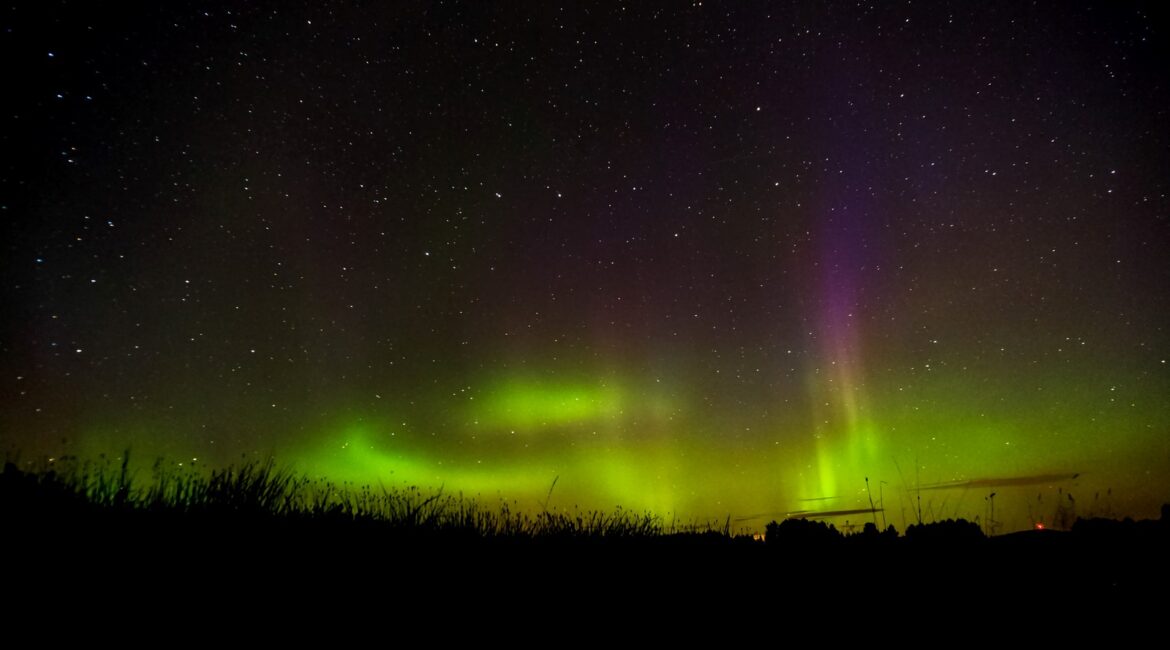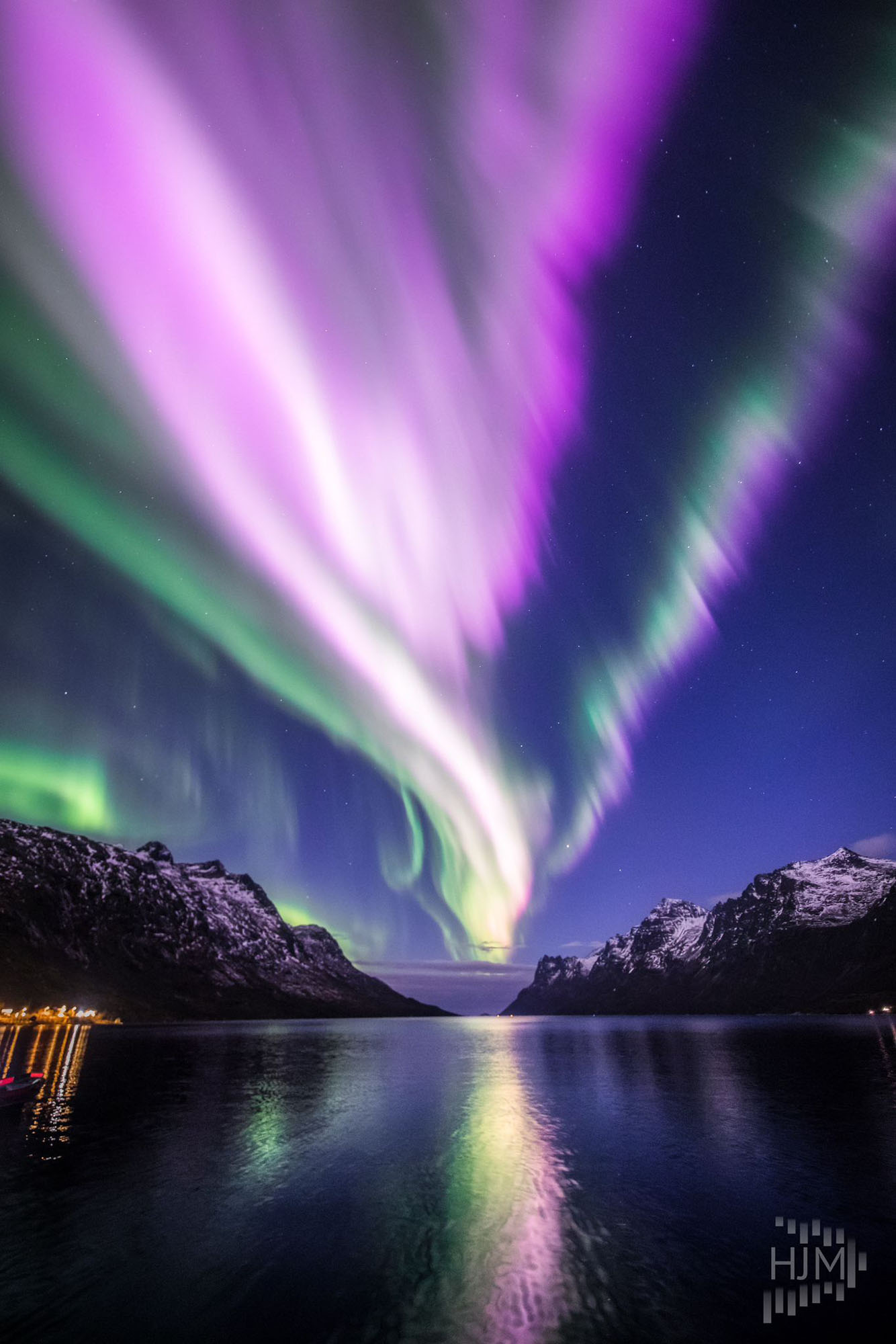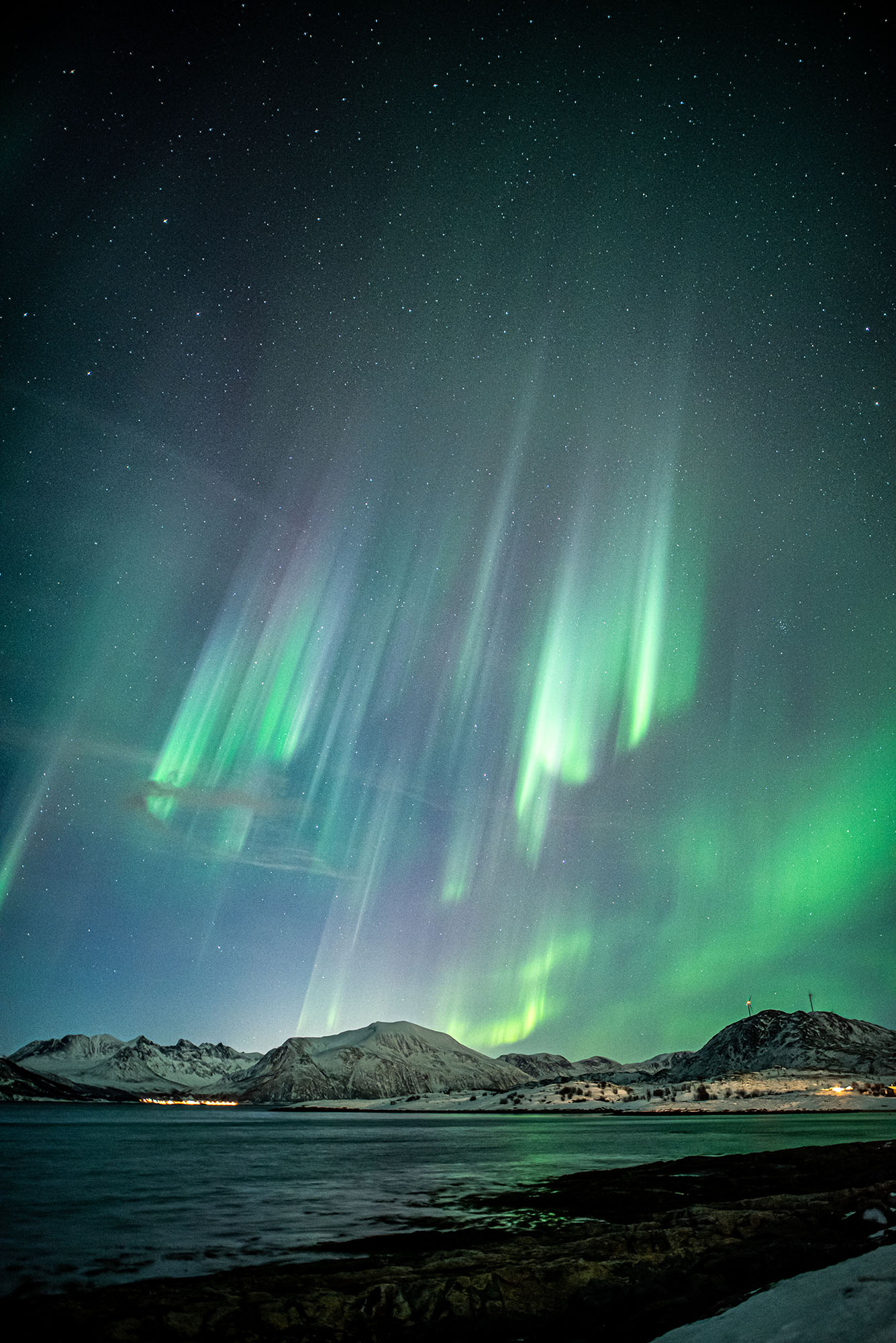The northern lights (Aurora borealis, aurora australis) – a light phenomenon observed in the upper atmosphere near the planet’s magnetic poles.
The sun constantly emits a stream of charged particles, the solar wind. During solar flares, the Sun ejects larger amounts of these particles, including protons and electrons. Near the Earth, the flight paths of these particles are mostly deflected by the Earth’s magnetic field. Captured by the Earth’s magnetosphere, particles move along a helix-shaped path along the magnetic field lines connecting both Earth’s magnetic poles, causing excitation of atoms in the polar region, and consequently auroral glow.
Wikipedia
I have been hunting the Northern Lights since 2013 and since 2016 I have been living in Tromsø, where I can admire them almost every day. I can’t count the sleepless nights and how many auroras I’ve seen. I can say for sure that every night is different and we can never be sure what the Green Lady can show us.
I will describe how to hunt the Northern Lights mainly from where I am staying, which is Tromsø.
Tromsø lies in the “belt” of the aurora, which is where the reaction takes place and we can watch the aurora
When?
In Tromsø, the Northern Lights season starts from mid-September and lasts until the end of March – the so-called Northern Lights season. the official season when tour companies offer trips to Hunt for the Northern Lights. And really when it’s night. To be able to admire this wonderful phenomenon, we must see the stars (night) and have a sufficient number of “dark” hours. The first aurora can be seen from August 20, and the latest when I saw it was April 17. However, at such early and late dates, it is a very short time frame (30 min – 1 h) to watch the Green Lady
This is related to the polar day and night.The polar day in Tromsø lasts from May 19 to July 26, which means that the sun is always above the horizon. Polar night from November 28 to January 14 – The sun is always below the horizon, it does not mean that it is dark here for 24 hours.The sun is below the horizon and does not cross it, then it is bright here for a few hours – you can compare it to sunrise and sunset without direct sun
Let us remember that Tromsø lies at 69°40’N, 350 km beyond the Arctic Circle.
In short: in northern Norway from mid-September to the end of March
Where?
For the best chance of seeing a really good spectacle in the sky, head north. To the regions of northern Norway (e.g. to Tromsø), Finland, Sweden. Also Iceland, Alaska, Canada, Greenland… All places that are beyond the Arctic Circle, i.e. the Earth’s parallel with a width of 66°N.Then you can be almost certain that you will see the Northern Lights.
Almost – remember that the Northern Lights are a natural phenomenon, there is never a guarantee that they will appear in the sky.In addition, of course, night and no light pollution.It’s hard to see the Northern Lights in the city, but it’s possible.This most often happens with very strong activity.
Of course, auroras occur mainly above the Arctic Circle, but in favorable conditions they can be visible even around the 50th parallel – I managed to get a shot near Oslo Gardermoen airport and even near Warsaw a few times.
In short: beyond the polar circle
How?
To observe the Northern Lights, we need a starry sky – no clouds or partial cloud cover, where we will still see the stars – the Northern Lights are over 100km above the ground
A place without light pollution – outside the city. And then we have to wait for the Green Lady to appear in the sky.
Of course, warm clothes, a camera (link) and a positive attitude
Northern Lights Forecast
On the websites: Aurora Service, SWPC NOAA, Space Weather Live there is information about the Northern Lights forecast.
Most applications are based on the KP forecast (2, 3, 4.33, 5 (G1) this is a coefficient that informs us how far south we can see the aurora. These parameters are helpful if we are not in the “band” of the aurora, e.g. near central and southern Norway.
The most important parameter for us is the coefficient Bz, it relates to the polarization of the magnetic field. In the simplest terms, the value of Bz must be negative for the glow reaction of the particles to be directed towards the Earth. At a positive value, of course, the reaction takes place, but the Aurora Borealis shines into space, reflecting off the magnetic field like a mirror. Then we can say that there is no activity.
Parameters such as solar wind speed and density are very helpful in determining what kind of aurora we can see on a given day. And we distinguish strands, arcs, curtains, rays, crowns and others.
https://www.spaceweatherlive.com/pl/aktywnosc-zorzowa.html
https://services.swpc.noaa.gov/images/aurora-forecast-northern-hemisphere.jpg
Colors of the northern lights
The color of the aurora depends on the type of gas and the altitude at which the phenomenon occurs
Green, the most commonly seen color in the aurora, is formed when charged particles collide with oxygen molecules at altitudes of 100 to 250 km.
Pink appears at the lower edge of the aurora,produced by nitrogen molecules at an altitude of about 100 km.
Red is at an altitude of 250 to 400 km when molecules collide with oxygen atoms.The lifetimes of these excited states, the time between an electron in an atom gaining energy and then releasing it as a photon, are much longer than the emission time of green oxygen, at over 200 seconds each.
Hydrogen and helium molecules can produce blue and purple auroras
Although our eyes cannot see all of these colors, cameras capture a wider range of shades when exposed to light.
The colors of the northern lights depending on the height
Above 250 km: red, oxygen
Up to 250 km: green, oxygen
Over 100 km: pink or purple, nitrogen
Up to 100 km: blue, nitrogen
photo. hjmnightskies (https://www.instagram.com/hjmnightskies/) pink aurora November 2, 2022 – one of the pinkest auroras in recent years
Red Aurora – January 14, 2023




